“We have again lost some of the noblest men in the south. The wounds generally in more of a serious nature than heretofore. I pronounce this battle to have been the most terrible in artillery than any one of the preceding fights. I never was so tired of shelling in my life. I hate cannons.”
~Dr. James Boulware
Antietam Diary, 6th South Carolina Infantry
“Rifles are shot to pieces in the hands of the soldiers. Canteens and haversacks are riddled with bullets, the dead and wounded go down in scores.”
~Captain Benjamin F. Cook
Antietam Diary, 12th Massachusetts Infantry

1787 – The Constitution of the United States of America was signed by 39 of 42 delegates present at the conclusion of the Constitutional Convention in Philadelphia.
Several of the delegates were disappointed in the result, a makeshift series of unfortunate compromises, resulting in three of them (Edmund Randolph of Virginia, George Mason of Virginia, and Elbridge Gerry of Massachusetts) refusing to sign.
Of the thirty-nine signers, Benjamin Franklin said “There are several parts of this Constitution which I do not at present approve, but I am not sure I shall never approve them.” He would accept the Constitution, he said, “because I expect no better and because I am not sure that it is not the best.”
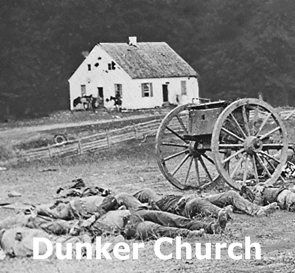
1862 – This is going to be very long and detailed.
Confederate and Union troops in the Civil War clashed near Maryland’s Antietam Creek in the bloodiest one-day battle in American history.
The Battle of Antietam actually consisted of three battles.
Beginning at dawn, Union General Joseph Hooker’s men stormed Confederate General Thomas J. “Stonewall” Jackson’s troops around the Dunker Church, the West Woods, and David Miller’s cornfield. The Federals made repeated attacks, but furious Rebel counterattacks kept the Yankees in check.
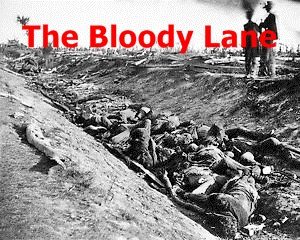
By early afternoon, the fighting moved south to the middle of the battlefield. Union troops under General Edwin Sumner inflicted devastating casualties on the Confederates along a sunken road that became known as “Bloody Lane”. Almost 2,000 Confederate dead and wounded piled up on this road.
McClellan now had a chance to exploit the opening in the Confederate center but he refused to apply reserves because he believed Lee’s force to be much larger than it actually was.

Late in the day, Union General Ambrose Burnside’s corps finally got into action, crossing the stone bridge over Antietam Creek and rolling up the Confederate right. At a crucial moment, A.P. Hill’s division arrived from Harpers Ferry and counterattacked, driving back Burnside and saving the day.
Although outnumbered two-to-one (Lee had committed his entire force of 38,000 men at Antietam, while McClellan, in yet another of his cautious mistakes, sent in less than three-quarters of his 80,000 available forces), the Confederates had fought the Union to a standstill.
The battle was over by 5:30 p.m. On the morning of September 18, Lee’s army prepared to defend against a Federal assault that never came. After an improvised truce for both sides to recover and exchange their wounded, Lee’s forces began withdrawing across the Potomac that evening to return to Virginia.
The losses for the one-day battle were staggering. Union casualties included 2,108 dead, 9,549 wounded, and 753 missing or captured, while Confederate casualties numbered 1,567 dead, 7,752 wounded, and 1,108 missing or captured.
Although the battle was tactically inconclusive, the Confederate troops had withdrawn first from the battlefield, making it, in military terms, a Union victory.
It was a sufficiently significant victory to give Lincoln the confidence to announce his Emancipation Proclamation, which discouraged the British and French governments from pursuing any potential plans to recognize the Confederacy.
As I said, very long, but necessarily so.
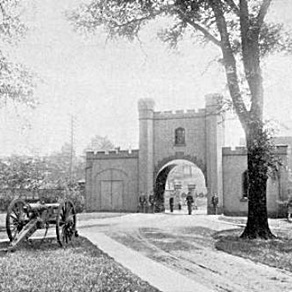
1862 – The Allegheny Arsenal in Pittsburgh, PA – an important supply and manufacturing center for the Union Army during the Civil War – was rocked by three explosions. 78 workers, mostly young women, were killed.
Although a coroner’s jury held that the accident had been the result of the negligent conduct of Col. John Symington and his subordinates in allowing loose powder to accumulate on the roadway, Symington was acquitted.

1908 – Thomas Selfridge, a first lieutenant in the U.S. Army became the first person to die in an airplane crash. He was killed while seated as a passenger on a demonstration flight piloted by Orville Wright.
Wright had visited Fort Myer in Virginia to demonstrate the 1908 Wright Military Flyer for the U.S. Army Signal Corps division.
On September 17, Selfridge arranged to be his passenger and Wright piloted the craft. The Flyer was carrying more weight than it had ever done before; the combined weight of the two men was approximately 320 pounds.
The Flyer circled Fort Myer four times at a height of 150 feet. Halfway through the fifth circuit, the right-hand propeller broke, losing thrust. The split propeller hit a guide wire bracing the rear vertical rudder. The wire tore out of its fastening and shattered the propeller; the rudder swiveled to the horizontal and sent the Flyer into a nosedive.
Wright shut off the engine and managed to glide to about 75 feet, but the craft hit the ground nose first. Both men were thrown forward against the remaining wires and Selfridge struck one of the wooden uprights of the framework, fracturing the base of his skull.
He underwent neurosurgery but died three hours later without regaining consciousness.
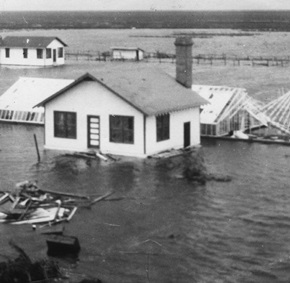
1928 – After blasting the West Palm Beach area of Florida late on the evening of September, 16, the Okeechobee Hurricane progressed inland and moved over Lake Okeechobee with winds of 150 mph.
In West Palm Beach, more than 1,711 homes were destroyed but the effects were most severe around Lake Okeechobee. The storm surge caused water to pour out of the southern edge of the lake, flooding hundreds of square miles to depths as great as 20 feet.
Hundreds of houses and buildings were swept away in the cities of Belle Glade, Canal Point, Chosen, Pahokee, and South Bay.
At least 2,500 people drowned.
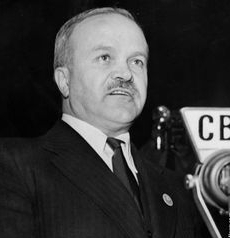
1939 – Soviet Foreign Minister Vyacheslav Molotov declared that the Polish government had ceased to exist, as the U.S.S.R. exercised the “fine print” of the Hitler-Stalin Non-aggression pact – the invasion and occupation of eastern Poland.
The 800,000-strong Soviet Red Army entered and created the Belarusian and Ukrainian fronts after invading the eastern regions of Poland. With no help from Western allies on the way, the Polish military ordered all units to evacuate Poland and reorganize in France.

1949 – An early morning fire consumed the Canada Steamship Lines Great Lakes cruise liner Noronic – the most luxurious passenger steamer ever placed in service on the Great Lakes – in Toronto harbor.
118 of the 522 passengers – all of the victims were American – died. One member of the crew of 171 also perished.
No cause was ever determined.
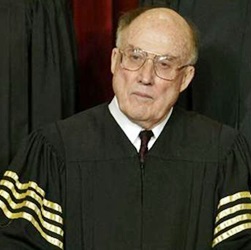
1986 – The Senate confirmed the nomination of William H. Rehnquist as the 16th chief justice of the United States.
Once confirmed, he led a Court that put the brakes on some of the excesses of the Earl Warren era while keeping pace with the sentiments of a majority of the country – generally siding with economic conservatives and against cultural conservatives.

1996 – Former Vice President Spiro Agnew died after being hospitalized and diagnosed with an advanced, yet to that point undetected, form of leukemia. He was 77.
In 1973, he became the second U.S. Vice President to resign (the other was John C. Calhoun in 1832) but the first to do so for criminal reasons,

2001 – Wall Street trading resumed for the first time since the Sept. 11 terrorist attacks – its longest shutdown since the Depression; the Dow lost 684.81 points, its worst one-day point drop at the time.
Compiled by Ray Lemire ©2005-2020 RayLemire.com / Streamingoldies.com. All Rights Reserved.
Kind of a snooty attitude Mr. Franklin. Such a big day in our history. Oh to have been a mouse in the corner.
So many mistakes…so many lives! Such a horrific battle. Such bravery. Such an historical turning point. And such a sad time in our history.
What? If he was negligent then how can you acquit?
I am surprised that either of them survived! Must have been terrifying!
Talk about terrifying! Nature is the cruelest. It must have happened so fast.
Another very scary event…the people of Poland must have felt so betrayed and frightened.
I hadn’t heard about the Noronic, I bet that was an awesome cruise, well not the last one. Isn’t it ironic to die in a fire when you are on a boat in the water?
Agnew….interesting that his leukemia was undetected until it was too late. Maybe that’s a good thing. He was not a good man.
Has Covid changed those numbers for the stock market?
I will sleep better now for the music, news and history I have learned thanks to you, Ray.
Good night
Thank you, Donna. 🙂
It’s always so rewarding to see readers get as much as they can from these “lessons”. You always seem to and that makes my humble efforts worthwhile.